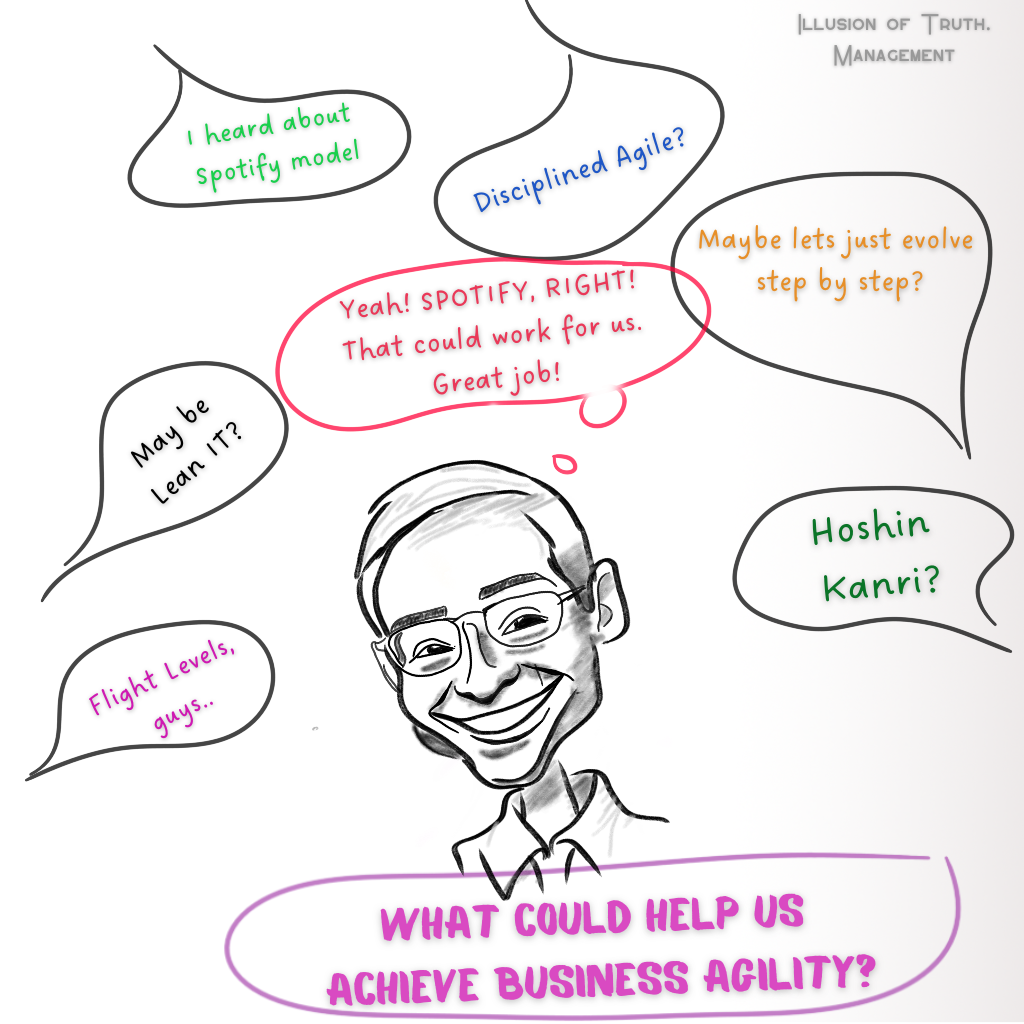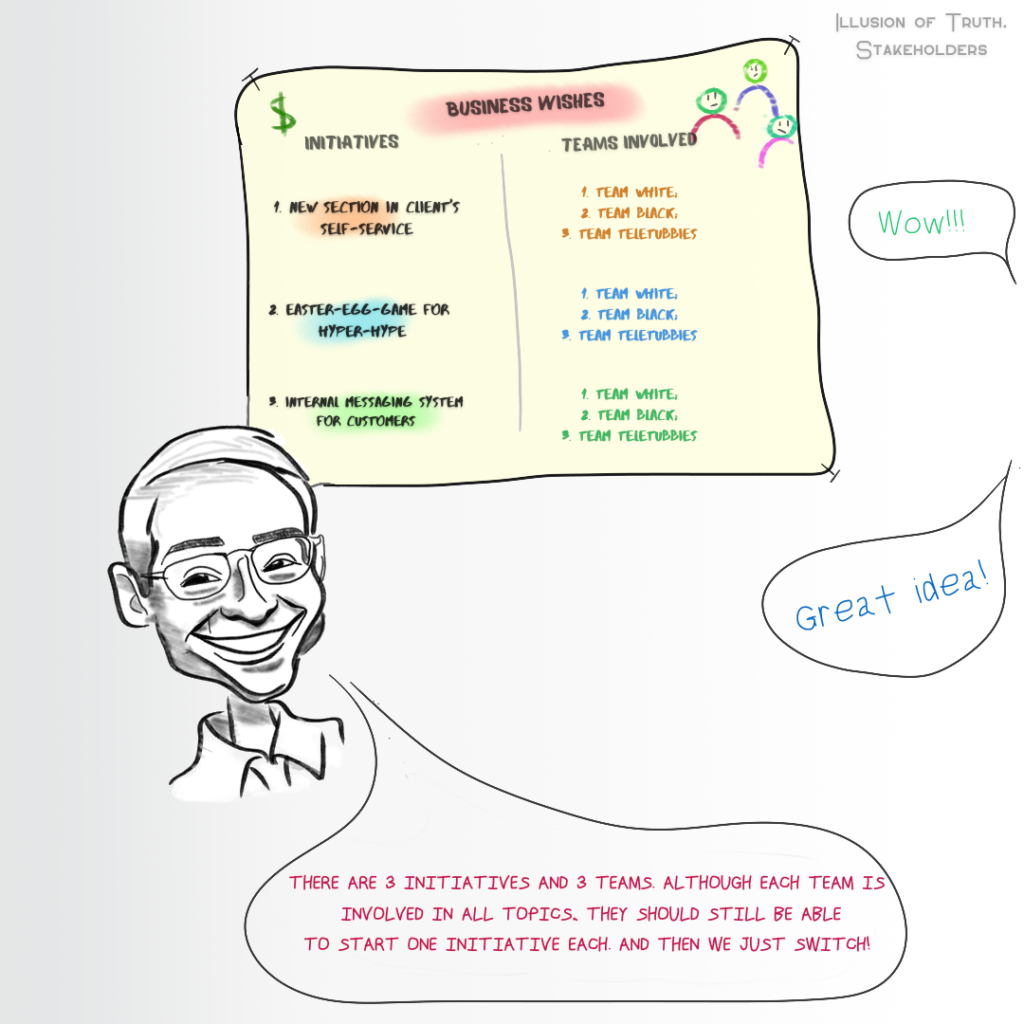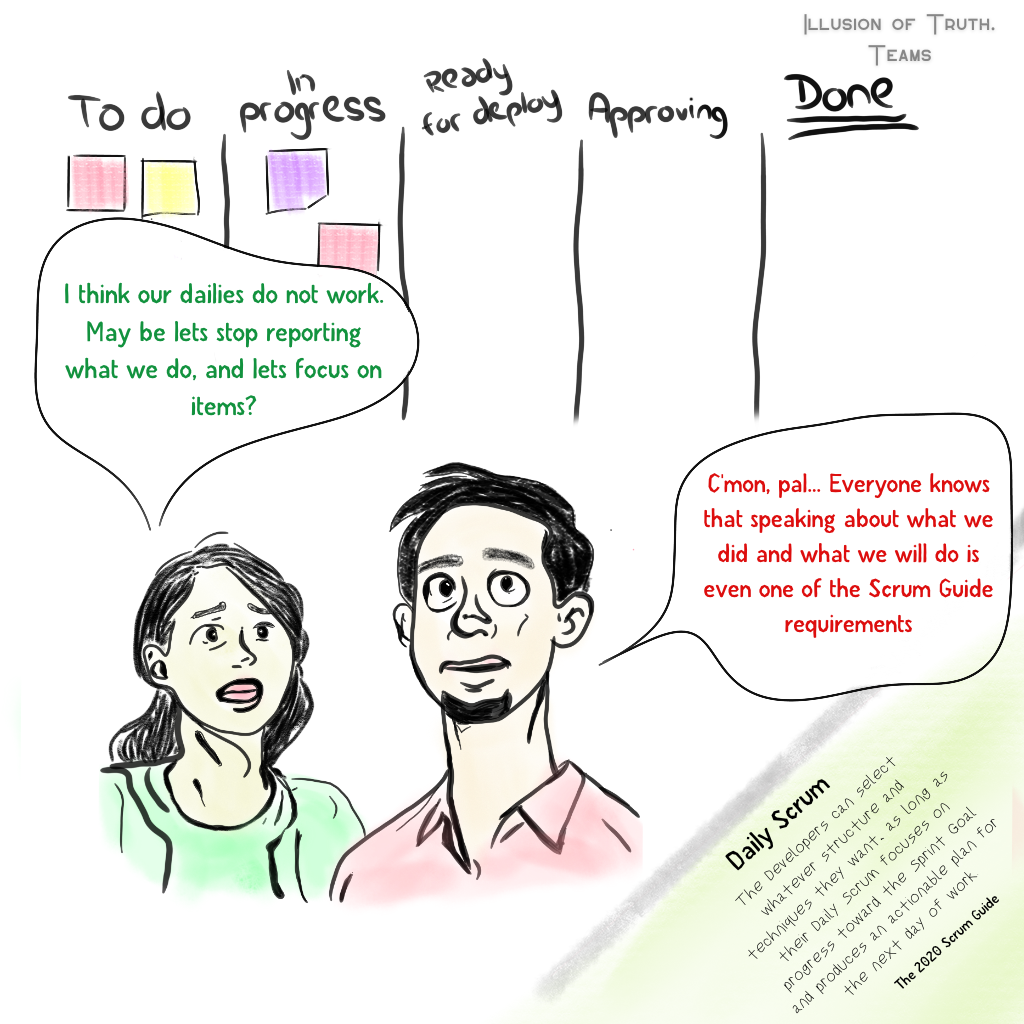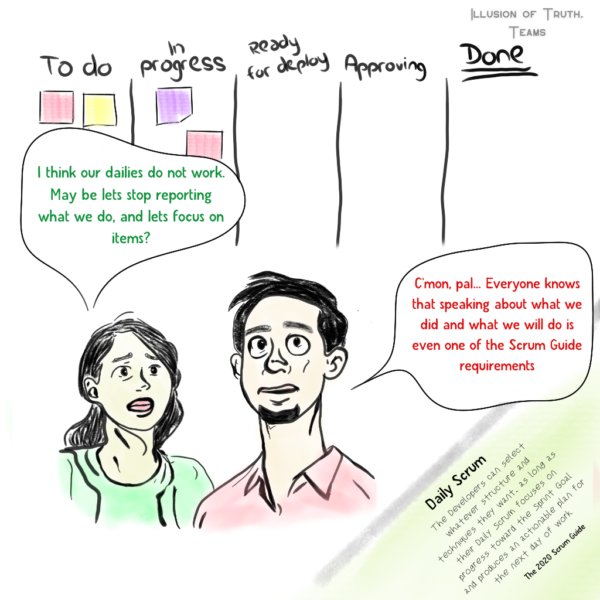Today, I’m starting a series to introduce cognitive biases from Daniel Kahneman’s book “Thinking, Fast and Slow” and link them to Scrum Masters’ everyday context – why we should know them and how they can help in our day-to-day responsibilities. I’ll post weekly if there’s interest.
WHAT 🔎
The “illusion of truth” is a cognitive bias where people are more likely to believe a statement or claim simply because it’s familiar or they have heard it before, regardless of its accuracy or truthfulness. This bias shows that hearing something repeatedly makes us more likely to believe it’s true, even if it’s not, and we tend to perceive familiarity of expression as validity in even unfamiliar context.
EXAMPLE 📝
Think about watching “Who Wants to Be a Millionaire?” and facing a question with unfamiliar choices except for one that sounds familiar – we all know the answer, right? Or consider which is the best-selling mobile phone ever: Nokia 3310, Nokia 1100, or Nokia 1110? Despite Nokia 3310 not ranking even in the top 15, we believe “everyone had it” (which is maybe truth, but not making it top-selling).

WHEN NEEDED ⏰
Here are practical situations where a Scrum Master could apply knowledge of this bias:
👉 Sessions with management 🫅
Understanding this bias is crucial during transformation-related conversations. Previously heard methods will dominate over innovations. Rushing may prevent success, so take it gently, drop by drop – it will work.
👉 Sessions with POs and stakeholders 🧑🏫
Challenge historical knowledge and data (isn’t it 2y old?) to ensure decisions are supported by valid facts, not just cognitive familiarity.
The most dangerous realisation of the bias is our belief that maximizing resource utilization leads to better results. We may fall into the trap of keeping everyone busy, initiating multiple projects simultaneously, and allocating tasks indiscriminately, regardless of their completion status. As Scrum Masters, we have to take care of that.


👉 Team decision-making events 🧑🤝🧑
Challenge suggestions for actions against the current situation and need and avoid decisions based solely on often-heard solutions or often-raised topics.
👉 Goals, OKR, KPIs, etc. discussions 🎯
Prevent falling into the bias trap by starting from needs, not ideas to implement, and staying aligned with current organizational goals.
👉 General coaching 🧑🎓
Prefer explaining the nature of tools, practices, or frameworks over using specific terms until a solid common ground is established with contributors. Giving labels may create bias.
In summary, understanding the “illusion of truth” bias can help Scrum Masters navigate various situations effectively by avoiding reliance on familiar but potentially misleading information.
